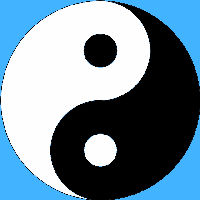An Introduction to Beijing Wu Style a d Wu(Hao) Style Tai Chi
There are in fact two different styles of Tai Chi named Wu created by different teachers.
Both were inspired by Yang Style Tai Chi although Wu(Hao) recombines techniques from the Chen tradition.
Wu Style Tai Chi
The Beijing Wu Style is based on the small circle (Xiao Jia) form of Yang Taichi, and so students learn with more of a focus on the internal turning of the dantian from the beginning.
The founder Wu Quanyou (1834-1902) was a student of Yang Lu Chan's son, Yang Banhou and the story goes that Yang Banhou only taught him large circle movements and so was always able to beat him easily in Pushing Hands practice, and caused him to go lame.
Yang Lu Chan saw this and decided to teach Wu Quanyou, the small circle movements himself and afterwards Yang Banhou was never again able to beat him.
The interesting points from this story are that Yang Banhou was famous for a very hard aggressive style of taichi and he had returned to Chen Xiao Jia for more martial training, but his father Yang Lu Chan was famous for being soft and slow in his martial combat, never killing anyone, just pushing them away into nets which he required to be set up around the sparring area.
Wu Quanyou learnt this soft, sung way of 'fighting', mastering the 'neutralising' skill of Tai chi chuan, allowing him to use the other person's energy against him and so Yang Banhou despite his obvious hard taichi power couldn't beat him. This for me is an example of the highest level of hard dantian power taichi versus a very high level of natural Tao taichi and the gentle way wins. Both practitioners used Xiao Jia small circles so this was the ultimate match.
After this experience he only taught his students small circle taichi in an unforced natural way.
Like Yang Taichi, Wu Taichi has evolved over time and so there are different styles available today.
For more information: Wu Family Taichi
Wu (Hao) Style Tai Chi
Wu (Hao) was created by Wu Yu-hsiang (1812-1880). A member of a wealthy family, with high level experience in the martial arts, he went on to learn Yang style with Yang Lu Chan and then Chen Xiao Jia with Chen Qin Ping.
The Wu(Hao) system is very internal and appear to have a clearer understanding and explanation of the role of the yin / yang in taichi and what the whole art is really about, then seems to be available in other styles.
The main lineage holder now appears to be Master Liu Jishun who lives in California
There are some really interesting articles by Master Liu: An Introduction to Wu (Hao) Taichi and The Essence of Wu (Hao) Taichi
Master Liu's teacher Hao Shaoru taught many students in China in his life and so there are no doubt many good people to learn with there.
